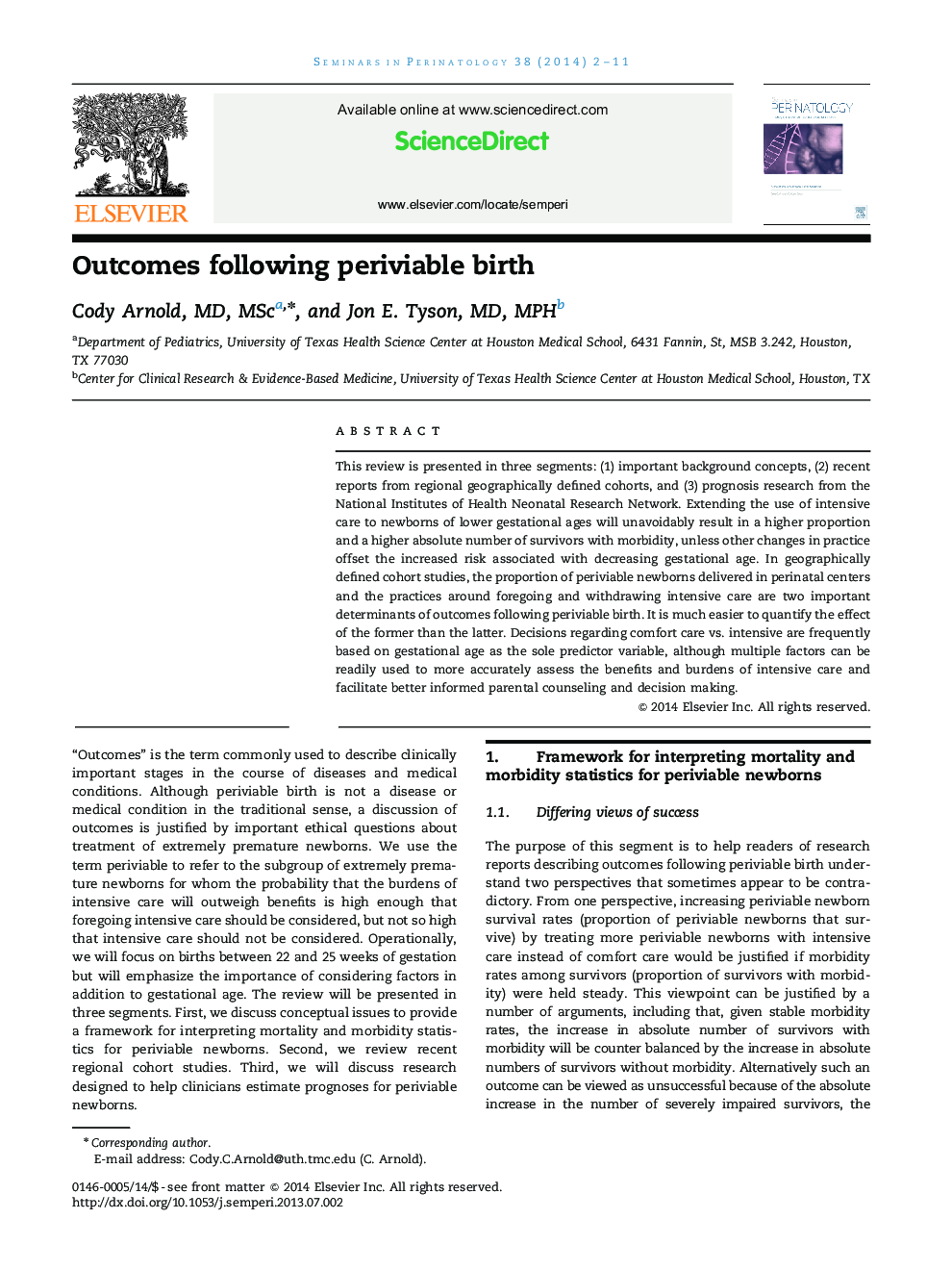| Article ID | Journal | Published Year | Pages | File Type |
|---|---|---|---|---|
| 3836493 | Seminars in Perinatology | 2014 | 10 Pages |
This review is presented in three segments: (1) important background concepts, (2) recent reports from regional geographically defined cohorts, and (3) prognosis research from the National Institutes of Health Neonatal Research Network. Extending the use of intensive care to newborns of lower gestational ages will unavoidably result in a higher proportion and a higher absolute number of survivors with morbidity, unless other changes in practice offset the increased risk associated with decreasing gestational age. In geographically defined cohort studies, the proportion of periviable newborns delivered in perinatal centers and the practices around foregoing and withdrawing intensive care are two important determinants of outcomes following periviable birth. It is much easier to quantify the effect of the former than the latter. Decisions regarding comfort care vs. intensive are frequently based on gestational age as the sole predictor variable, although multiple factors can be readily used to more accurately assess the benefits and burdens of intensive care and facilitate better informed parental counseling and decision making.
